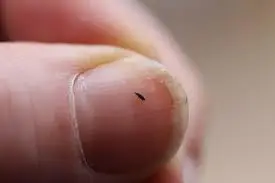Last Updated on 05/12/2025 by Kimberly
Fleas aren’t just a nuisance; these tiny pests can cause big problems for our feline friends. As a cat owner, understanding how fleas affect your pet is key. Fleas are more than just bloodsuckers—they can transmit some pretty nasty diseases to cats.
Cats can pick up these diseases while roaming their usual haunts, making flea infestations a real concern. Considering how small these critters are, the impact they can have is surprisingly significant. Knowing what to watch for means you can jump into action if your pet seems unwell.
Early detection is your best defense against flea-borne diseases. Recognizing the signs and acting quickly can spare your cat a lot of discomfort and reduce health risks. Regular vet check-ups and keeping an eye on your cat’s behavior can make a huge difference in catching issues early.
Prevention plays a vital role too. Whether it’s choosing the right flea treatment or maintaining a flea-free environment, staying one step ahead is important. Investing a little time in understanding the threats fleas pose could keep your pet healthy and flea-free.
Flea Allergy Dermatitis: More Than Just Itching
Flea allergy dermatitis is a common problem that goes beyond simple itching. When a cat has an allergic reaction to flea saliva, it results in this condition. Even a single flea bite can provoke a severe reaction in sensitive cats, making life pretty uncomfortable for them.
You’ll spot flea allergy dermatitis if you notice your cat scratching and biting excessively, leading to hair loss or skin infections. The situation gets worse over time if not treated, often resulting in scabby, irritated skin. Your cat may seem miserable, and it’s heartbreaking to watch them in distress.
Quality of life takes a dive for affected cats. Chronic itching can lead to restlessness, affecting sleeping and eating habits, and causing weight loss over time. Providing relief and comfort should be top priority, which means timely intervention is crucial.
Treatment involves a mix of approaches. First, get rid of the fleas—focus on both the cat and its environment. Talk with your vet about suitable flea treatments and keep up with those treatments regularly. Anti-inflammatory medications or allergy relief might be recommended by your vet as well.
Preventative measures make all the difference. Staying consistent with flea control products helps keep your pet protected. Make sure your home environment is flea-free with regular cleaning and vacuuming. Remember, tackling the root cause—fleas—can prevent this uncomfortable condition from occurring in the first place.
Plague: A Rare but Dangerous Threat
Plague might not be the first thing that comes to mind when thinking about flea-borne diseases in cats, but it’s a real risk. This ancient disease still poses a threat although it’s rare, specifically in certain areas where flea populations can carry the bacterium Yersinia pestis.
Historical accounts tell us how impactful the plague was, and while times have changed, awareness is still key. The transmission occurs through flea bites, making our feline friends potential hosts. Outdoor cats in particular areas are more prone to exposure, so knowing your local risk is crucial.
Signs of the plague in cats include fever, lethargy, swollen lymph nodes, and sometimes vomiting or diarrhea. If you ever suspect your cat might have the plague, it’s a situation that requires immediate vet care. Early treatment markedly increases the chances of recovery.
Preventive action involves keeping the flea numbers at bay—protecting your cat is about protecting them from fleas. Ensure your pet is on appropriate flea prevention all year round, and maintain a clean environment to minimize contact with potential carriers.
Discuss with your vet about potential risks if you’re in a region where the plague is more prevalent. This not only helps with immediate healthcare concerns but also shapes proactive steps to manage and prevent potential outbreaks.
Feline Infectious Anemia: A Silent Culprit
Feline infectious anemia might not grab headlines, but it’s a stealthy threat to your cat’s health. This condition is caused by the bacterium Mycoplasma haemofelis, which fleas can help spread. Often, the disease creeps up on you, making it easy for pet owners to overlook until it becomes severe.
Symptoms don’t always make themselves known immediately. Keep an eye out for signs like loss of appetite, lethargy, and pale gums in your cat. More advanced symptoms could include weight loss and a noticeable decrease in activity or interest in play. While it’s not always obvious, the impact on their wellbeing can be significant.
Diagnosing feline infectious anemia involves blood tests that your vet will conduct to identify the presence of the bacterium. The quicker you get a diagnosis, the sooner appropriate treatment can begin. Treatment typically includes antibiotics and may require supportive care, such as blood transfusions in severe cases.
Maintaining your cat’s health through regular check-ups is an excellent way to catch issues like this early. Flea prevention remains a critical part of your strategy. By keeping fleas and other parasites under control, you’re reducing the risks associated with this disease significantly.
Your role in managing your cat’s environment extends beyond just typical care routines. It’s about being observant and keeping in touch with professionals for guidance. Never hesitate to contact your vet if something seems off. Your awareness and proactive measures ensure a healthier, happier life for your feline companion.
Preventing Flea-Borne Diseases: Responsible Pet Ownership
Effective flea control strategies make all the difference in keeping your cat healthy. Use treatments consistently and according to the package instructions or vet recommendations to maintain an effective barrier against these pesky parasites. Products vary, so finding the one that suits your cat best is important.
Taking care of your environment plays a major role in prevention. Regular cleaning, including vacuuming carpets and washing bedding, minimizes the chance of fleas setting up camp in your home. For outdoor spaces, consider treatments or barriers that can deter flea populations.
Regular veterinary check-ups don’t just balance your cat’s health records; they provide a real insight into their overall wellbeing. Vets can offer guidance on the best prevention and treatment options tailored to your pet’s specific needs and lifestyle.
Education is equally crucial for prevention. By understanding how flea-borne diseases can impact your cat, you arm yourself with knowledge to act promptly and effectively. This includes staying up-to-date with the latest effective flea treatments and practices.
By embracing a responsible approach, you’re not only aiding in disease prevention but also enhancing the quality of your cat’s life. A flea-free cat is one step closer to being healthier and happier, which is the best gift you can give as a pet owner.


